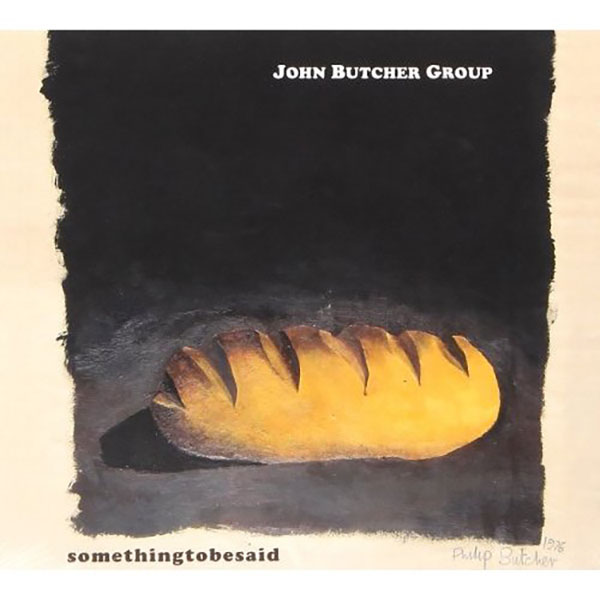
by Tim Owen
August 06, 2010
/ ALBUM
Tim Owen looks at two releases by the improvising saxophonist John Butcher.
John Butcher
Invisible Ear
(Weight of Wax )
John Butcher - Saxophones
John Butcher Group
somethingtobesaid
(Weight of Wax)
Chris Burn - Piano; John Butcher - Saxophones and pre-recordings; Clare Cooper - Harp, guzheng; dieb13 - Turntables; John Edwards - Double bass; Thomas Lehn - Analogue synthesiser; Adam Linson - Double bass and electronics; Gino Robair - Percussion and energised surfaces
I first came across John Butcher in 1987 when I speculatively bought a copy of “Conceits”, an album recorded by Butcher’s trio with guitarist John Russell and violinist Phil Durrant, a striking, bracingly ascetic statement in an era otherwise lamentable for the music what with the rise of acid jazz and the ascendancy of the Marsalis clan.
It was only later that I realised that he ran the label, Acta, which issued the vinyl. From the mid ?90s to 2008 he was a key figure in Russell and Chris Burn’s improv club Mopomoso at the Red Rose in North London; the club remains a going concern at the Vortex. These two new CD releases illustrate complimentary facets of his recent work.
“Invisible Ear” is of considerable interest for anyone captivated by the 2006 release of “Resonant Spaces”, which documented Butcher’s remarkable solo tour of unusual locations - including cave, oil tank, ice house, and mausoleum - in mainland Scotland and Orkney, all with peculiar acoustic properties. It is one of the most intriguing and, importantly, purely enjoyable documents of recent new music. “Invisible Ear” pre-dates it by four years, being originally recorded, mostly in London, in 2002, and released in the following year as a limited edition on an Italian label. As with “Resonant Spaces”, “Invisible Ear” features Butcher playing acoustic, amplified, and feedbacking saxophones. Individual tracks on “Invisible Ear” feature solo and multi-tracked tenor and soprano saxophones, sometimes close-miked.
The majority of Invisible Ear’s twelve tracks will mostly be of interest to those who closely follow developments in solo saxophone music, those intrigued by the interface of acoustic music and technology, and devotees of cross-pollinated noise and free music, that zone where sounds of biological origin bleed mysteriously into digital noise. And if that all sounds a bit academic, if you’re thinking, well, that doesn’t sound much like music, it’s probably not for you.
So, what does it sound like? While “Swan Style’s” close-miking merely amplifies the reedy squits of pressurised air, the feed-backing of “Streamers” evokes the sound of an aeolian harp. On “Cup Anatomical,” also close-miked, you can hear the spittle vibrating on the saxophone reed, while ?“a controversial fix for”? evokes a gritty, distorted blues harmonica riff. It’s actually a feed-backing tenor sax. And then there are the three multi-track recordings. “Atelier,” the album’s finale, layers three soprano saxophones recorded in a resonant room. It is the clearest precursor to the “Resonant Spaces” material, and alongside “The Importance of Gossip”, the one track to add Korg synthesizer to the mix, will certainly be the most rewarding for the general listener. “What Remains” is a gathering storm generated by eight multi-track saxophones, a less turbulent cousin to John Oswald’s “Spectre” for multi-track string quartet.
In 1998, fresh from his resolutely acoustic triumphs with the Russell/Durrant/Butcher trio, Butcher joined the Austrian electro-acoustic ensemble Polwechsel, and he remains a member today (for my review of their latest CD, “Field”, see elsewhere on this site). The second of the albums under consideration here, “somethingtobesaid”, documents a performance by a specially convened octet from the 2008 Huddersfield Contemporary Music Festival, in which Butcher explores related but contrasting ideas in a single long-form composition, here divided into nine CD indices.
Butcher has been canny in his selection of an instrumentation that draws from a common textural palette, and of an ensemble whose parts can be contrasted and interwoven in such a way as to knit the movements that result from its various sub-divisions into a satisfying whole. Butcher doesn’t consistently avoid the dangers inherent in bringing together instruments from different disciplines, and there are some awkward juxtapositions and somewhat mannered passages, but on the whole he succeeds in deploying the ensemble to magnify the themes and fixations familiar from his solo works.
The primarily acoustic instrumentation is used to generate timbres usually associated with electronic music, with Thomas Lehn’s analogue synthesizer, Adam Linson’s electronically treated double bass, dieb13’s turntables and Gino Robair’s “energised surfaces” all sympathetic to this guiding impulse. There is a lot of clear water between this strain of electro-acoustics and Evan Parker’s superficially comparable Electro-Acoustic Ensemble, since Butcher is interested not in the processing and manipulation of acoustic instrumentation but in expanding the sonic palette of the ensemble purely through group dynamics and fluid (re)configuration. “somethingtobesaid” is a challenging, absorbing and rewarding listen.
No two discs can tell Butcher’s whole story. So far this year I have been fortunate to have seen him perform in incredibly dynamic and variegated duets with both pianist Matthew Shipp and drummer Mark Sanders (for my report on the latter, see the Freedom of the City 2010 review elsewhere on the site), and in a quartet fronted by spiky NYC guitarist Eliot Sharp alongside the formidable bass/drum tag team of John Edwards and Tony Marsh. For the Sharp session Butcher’s playing was surprisingly “straight”, giving an explicit reminder that he hasn’t allowed a sometime aesthetic commitment to “lowercase” improvisation to become a confinement. That’s a side of Butcher that hasn’t yet made it onto record. Never mind; both “Invisible Ear” and “somethingtobesaid” are very welcome additions to a comparatively slim, at around fourteen titles, catalogue of solo works.
Tim’s star rating; 3.5 stars per album.
blog comments powered by Disqus